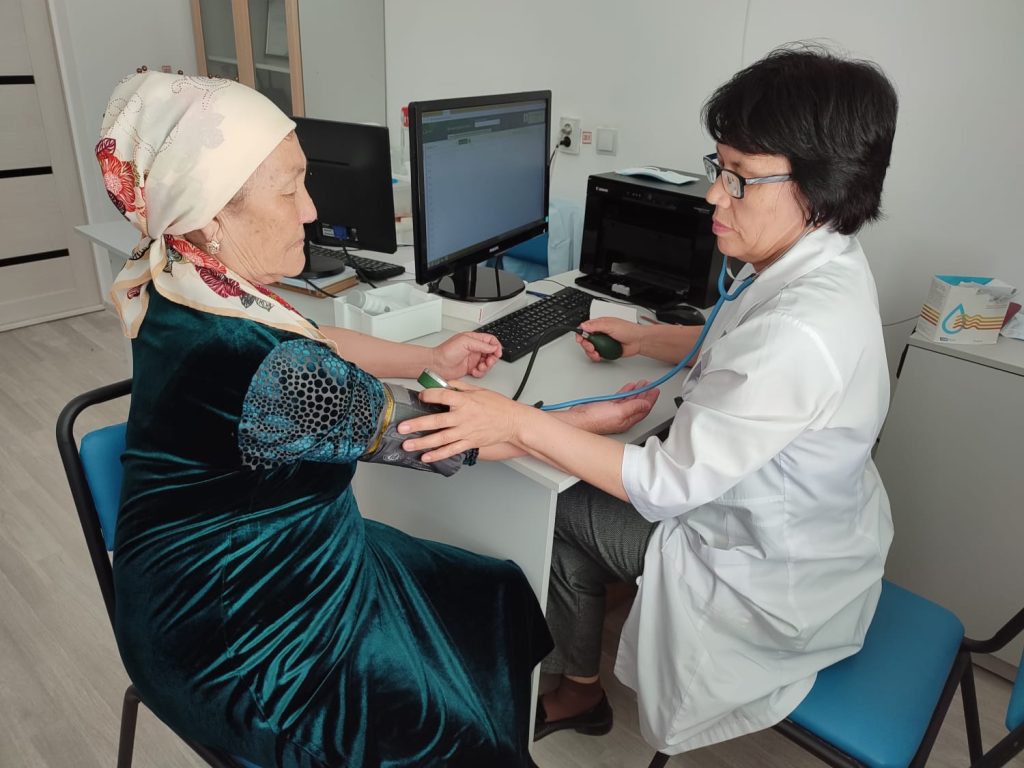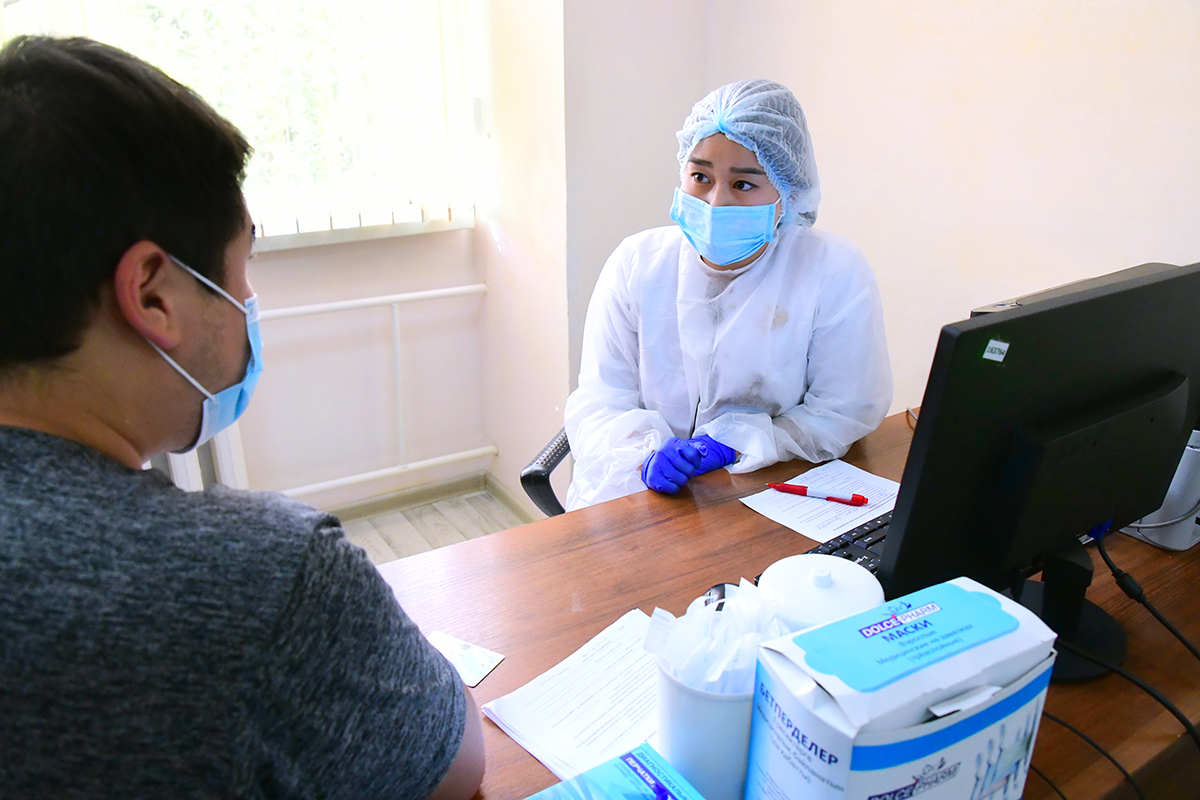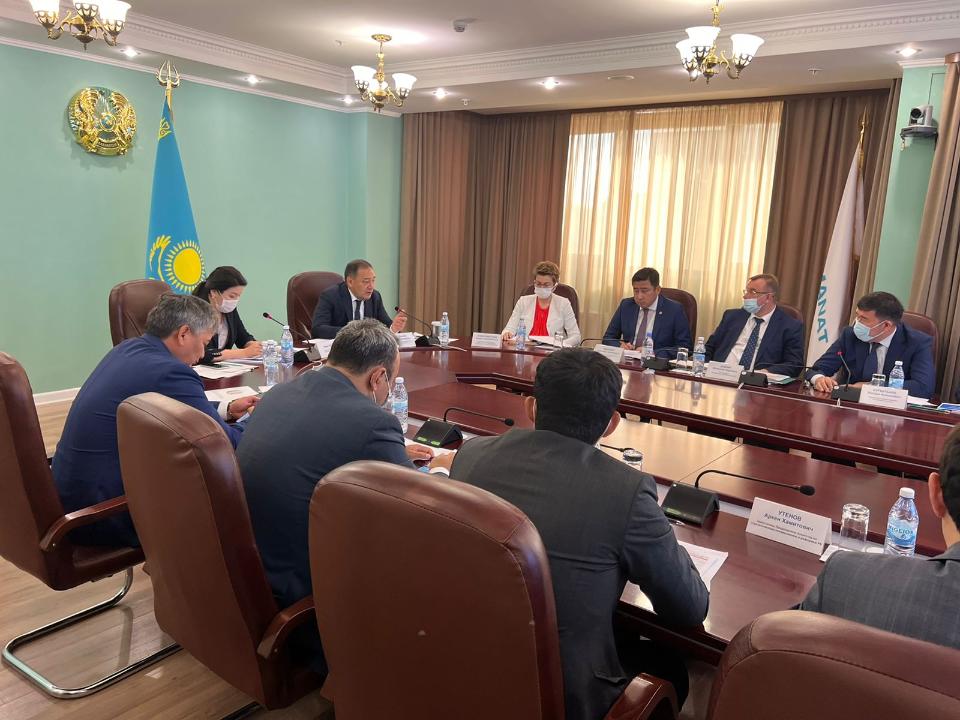Rural health care was one of Ministry of Healthcare’s priorities in 2023 in Kazakhstan. The Social Health Insurance Fund summarized its spending in 2023 and reported that 600 billion tenge, or 24% of its overall budget of 2.5 trillion tenge for health services covered services provided in rural areas.
In Kazakhstan, 38% of the population lives in rural areas. Historically, residents in rural areas did not always have good access to health care and had to travel hundreds of kilometers to access any health care or to get specialized health care.
The Semashko model of a health care system, inherited by Kazakhstan from the Soviet Union, had laid the good foundation to maximize geographically accessible network of heath care providers in rural areas, described below:
- Rural areas have district hospitals (“central district hospitals”) which are located in towns or large villages and cover a certain geographic area with secondary inpatient care, as well as primary care.
- The district hospitals in rural locations provide a comprehensive set of primary care services to their adjacent populations as they own and operate a number of polyclinics, primary care offices, physician assistant’s offices, and stand-alone community health nurse’s offices spread across the designated geographic territory. Some primary care organizations which are called “polyclinics” because they provide not only primary care, but also specialized outpatient, laboratory and imaging services, are stand-alone organizations that do not belong a hospital.
- Usually, over 95% of health care services in rural areas are provided by public providers (the district hospitals and their primary care offices are owned by the local governments). But especially with the introduction of social health insurance system in 2020, private providers became incentivized to offer services in some of the densely populated rural areas as well, by competing with public providers and by signing contracts with the single payer – the Social Health Insurance Fund (hereinafter – SHIF).
- Therefore, rural residents typically have access to primary care and specialized outpatient and inpatient care through the network of district hospitals and their primary care offices, ambulance care, but also through the mobile medical units (trucks equipped to provide medical care) and medical trains that travel through railways and provide preventive primary and urgent care at certain times of the year.
Such an approach to organize health care in rural areas since the Soviet times has been beneficial for scarcely populated countries like Kazakhstan, which is the ninth largest country in the world with vast territories that make it harder to concentrate health care resources in some areas.
According to the recent news by the SHIF of Kazakhstan, rural health care organizations received about 600 billion tenge for medical services provided in 2023. The funds reimbursed comprehensive primary health care, consultative and diagnostic care, free outpatient drugs, medical rehabilitation, and treatment in rural hospitals (“district hospitals”).
In addition to these funds, 700 thousand rural residents received health care services in urban locations (in urban hospitals) that were worth 213 billion tenge, or another 8.5% of the entire health care services budget paid by the single payer SHIF. These services received by rural residents in cities also included “high-tech medical care” worth 21 billion tenge (tertiary and quaternary level, resource-intensive specialized care).
According to SHIF, outpatient visits to primary care polyclinics in rural areas have increased by 15% in 2023 compared to previous year, totaling 53 million visits by 7.7 million rural residents.
In addition, the SHIF reported how much it spent on CT and MRI services which became more accessible as part of mandatory social health insurance benefits package, as well as other types of services specific to the rural areas: such as remote (virtual) consultations and mobile medical units — trains and trucks equipped with medical technology and staff intended to travel and cover areas that otherwise would have limited access to healthcare. The Social Health Insurance Fund summarized that 600 billion tenge, or 24% of its overall budget of 2.5 trillion tenge in 2023 covered health services provided in rural areas.






